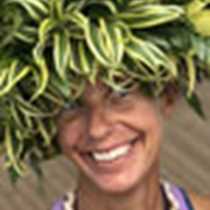Lagoya Island
This morning we awoke and National Geographic Explorer was amongst a feathered frenzy and breeding colony of auks. Like a swarm of bees the Brunnich’s guillemots (aka thick billed murres) filled the air as they flew from narrow ledges to foraging areas in the cold and well oxygenated waters surrounding Svalbard. The mass congregation of this one breeding colony helps to tell the tale of a world we rarely see beneath the surface and the abundance of life that helps to feed the millions of seabirds who breed throughout the archipelago in the summer months. The dramatic dolerite and limestone cliffs of Kapp Fanshawe were a wonderful place to wake up this early birding morning.
From Hinlopen Strait we headed north to Lagoya Island in search of walrus after receiving ice charts that indicated our landing on Nordaustlandet was not possible. Upon arriving on Lagoya we were instantly rewarded with Odobenus rosmarus, “the one that walks on teeth.” A haul out site for male walrus, there were probably 80+ of the pinnipeds lounging on the beach and swimming in the near shore waters. Vying for space amongst the group we could see tusks and flippers waving in the air with occasional vocalizations as these thigmotactic creatures piled on top of each other. Hard to believe this massive 2 ton tusked creature lives off largely clams, using their vibrissae/whiskers searching the bottom for their prey. Further on down the beach we were further rewarded with a walrus skeleton and skull that had one tusk still attached. The weight of the skull alone provided appreciation for their massive size and strength.
Whilst the shoreline proved to be fairly barren (coming from the west coast of Spitsbergen Island) we did see some of summer’s blooms as the iconic Svalbard poppy was in flower which helped to tell the story of some of the adaptations of the Arctic flora with its hairy leaves, buds and parabolic acting flower. Arctic terns, Sabines gulls and red phalaropes also combed the shoreline displaying breeding and nesting behaviors. The intensity of life cycles here high above the Arctic Circle are evident as the breeding birds and blooms are all very timely in this short season called summer.




